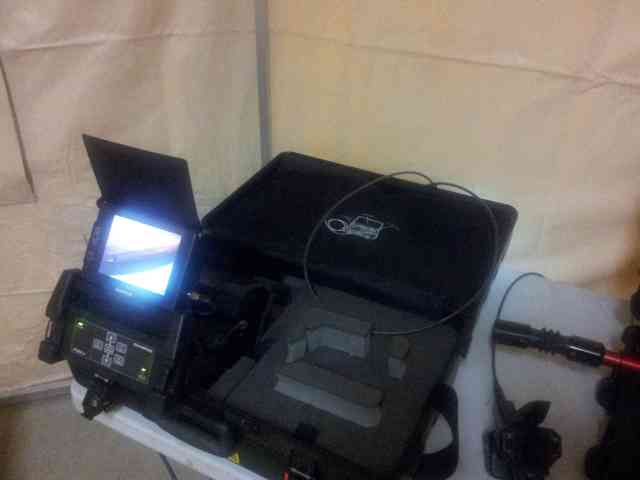Hi all,
I attended the ESF Volunteer Leaders Forum 2013 as a delegate from Bush Search and Rescue Victoria. Part of the forum was information sessions at the Pullman Hotel in Albert Park, but we also headed out on a few field trips.
Dealing with Traumatic Events
Any kind of emergency volunteer work is going to invariably deal with adverse outcomes. In the case of BSAR, this would be where a search is unsuccessful. Traumatic events can also occur during search, with families of the lost dealing with the reality of the outcome being uncertain. Searchers themselves can be witness to this. When searches are unsuccessful, one cannot help but know what has happened, and few of us are completely able to disconnect from this.
Presentations from Life Saving Victoria alerted me to research from The Australian Centre for Post-Traumatic Mental Health, and this is leading to change in the way potentially traumatic events are managed within the volunteer services. When I get time, I would like to have a look at some of their material. They have a free DVD on their site available to the public.
Recovery of war dead at Fromelles
Next up was an inspiring presentation from Lambis Englezos about the personal trials he faced, and at times official contempt, in order to find the missing fallen from the Battle of Fromelles in World War 1. The wikipedia link goes into much greater detail about the battle, and Lambis’s difficulties, but his story shows the value of perseverance. A number of people in the audience have personal links to people involved at Fromelles – which shows that events that occurred in World War 1 cannot today be considered “ancient history” but remain very real today.
State Control Centre
After a few more speakers, including Craig Lapsley – Fire Services Commissioner, our group headed out to East Burwood to the backup State Control Centre, with the primary being closed on that day. Here’s a look at the main control room (some numbers have been cut out of the picture)
This facility is used during major fire and flood events, but BSAR activity would generally not be controlled from here.
Police Academy
Next up was a trip to the Police Academy in Glen Waverley. It is a large campus that has been used by Police since the early 70s. We were shown past the parade ground (which cannot be entered except during official events in official capacity – a long-standing military and Police tradition) to a mock town used for scenario training. There was a mock train station, presumably used for scenarios involving trains. We were introduced to some of the equipment used by the Special Operations Group. Apart from all the weaponry and discussion about the high level of fitness needed by members of the squad, we also had a look at this toy:
This vehicle is essentially immune from small arms fire, can bust down walls and has many other features of assistance to the squad. One of these is a normal FM radio so we could listen to Essendon playing GWS while we checked out the vehicle. The groups that headed up on the Sunday did not get to see this thing as it was out “on a job”. Perhaps it would not be a good thing to be anywhere near the location of this “job”. I would say that it is unlikely to see this thing on a BSAR search if for nothing else that it is easy for its 9 tonnes of weight to get bogged on the soft tracks normally encountered there.
One interesting little device they had in the box next to the vehicle is a little remote control drone less than 20cm long that can be used to crawl into a building and provide a video feed back to a controller who can be situated in the vehicle.
Also in the mock village is a number of houses used for Police to practice entries into premises. This door pictured below has clearly had a number of busts over time:
Now, on a different note, the academy has a large chapel. The facility was once a Catholic monastery, but a number of members of the force have provided skills and time to have the area reopened as a non-denominational chapel. The flag in the left of this picture is the Victoria Police flag.
MFB displays at Burnley
After the time at the academy, we headed back towards town to arrive at MFB’s large facility at Burnley. I never knew of the existence of Urban Search and Rescue before today, which shows the value of these events. USAR is a multi-agency service largely set up by MFB, but provides services to any agency that requires it. There was a large number of MFB toys on display:
After following the example of others, I decided to get my photo taken in the driver’s seat of an MFB truck:
USAR have a device that can detect faint motion behind concrete structures. The device shown below even detected vibrations in the concrete slab caused by people talking:
There were a number of camera devices that could be used to provide video of places inaccessable to the contoller. Many of these would be highly useful in exploring collapsed structures for the purposes of finding people inside:
This device had a camera at the end of a cable. The camera could move around based on a joystick available to the controller. The cost of this device is over $60,000.
Life Saving Victoria
The next day, it was off to Life Saving Victoria and we first looked at their main helicopter. They also lease a second helicopter during the summer months. This vehicle is used for static line retrievals of people from the water. Being a static line, people are not winched back into the vehicle, but carried back to shore. Typically this is over a distance of 500m or less.
Here’s the cockpit:
Some of the attachments for the static line:
Life Saving Victoria operate a comms control centre at their Port Melbourne facility. They use 32 FM channels, comprising of some their own frequencies and VHF marine. There are UHF repeaters which give service to patrolled beaches and then carried back over IP to the control centre. The centre can patch several channels together as desired. Traffic consists of “sign on, sign off” notification and management of emergency events, such as dispatch of resources such as helicopters. There is effort to remove the non-emergency traffic from the radio channels to the internet.
Air Ambulance Victoria
After Life Saving Victoria, it was time to head up to Essendon Airport for a look at Air Ambulance Victoria’s main base. They operate four fixed wing aircraft and five helicopters. The four fix-winged craft are all Beechcraft B200 King Airs. Here’s one in for service:
One attraction of this aircraft is the larger door configuration for loading a stretcher. Part of the access structure is stored in a cavity in the wing.
Here’s a look inside the aircraft:
Five rotary wing aircraft are operated, and these are typically used for transports closer into Melbourne (eg Ballarat, Bendigo, etc) where it can be faster to use these craft. Most of these craft are operated from elsewhere, such as HEMS2 (HELIMED) from near Morwell. Often, delivery can be made straight to receiving hospitals, which is not possible with fixed wing aircraft. Here is HEMS5 only about 10 minutes before it was deployed for a job.
The aircraft are fitted with winches, seen below. One example of use of this capability was a rescue of a fallen walker near Eagle Peaks a number of years ago:
As Essendon Airport is controlled airspace, the helicopters have to take off using the taxiways and runways, like a fixed wing aircraft:
All in all, a very interesting two days. Not everything is directly relevant to searching,but informative none the less.
Regards,
Wayne Merry























You must be logged in to post a comment.